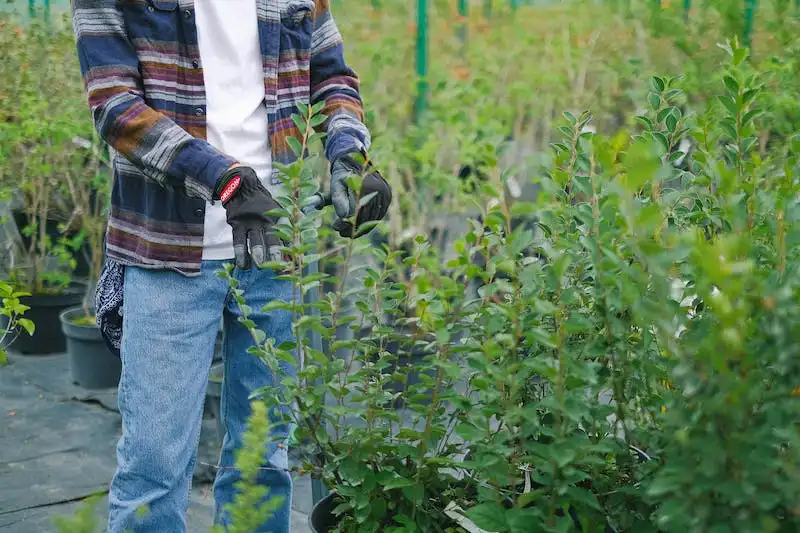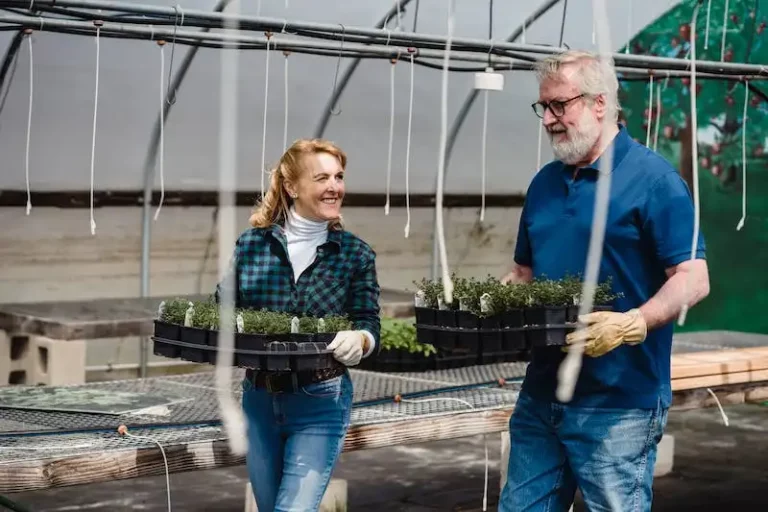Planting pear trees can be a very rewarding experience, especially if you have chosen the right location and followed the proper care instructions. In this guide, we will provide you with some tips on how to plant pear trees, where to plant them, and how to care for them.
Choosing the Right Location
When choosing a location for your pear tree, keep in mind that they thrive in full sun and well-drained soil. They also need a good amount of space, as they can grow up to 30 feet tall and wide. Make sure to avoid areas with excessive wind, as it can damage the tree and affect its fruiting.
Depending on the variety of pear tree you have chosen, they can be planted in different locations. Some varieties, like the Bartlett and Doyenne du Comice, can be grown in most areas, while others, like the Keiffer, are more suitable for southern regions.
Planting the Tree
Before planting the tree, make sure to prepare the planting hole. The hole should be two times wider and deeper than the root-ball of the tree. This will allow the roots to spread out and grow properly.
Once the hole is ready, place the tree in the center and straighten it out. Fill the hole with soil, making sure to remove any air pockets and lightly tamp down the soil. After planting, give the tree a good watering, and add a layer of mulch around the base to retain moisture.
Proper Care
To ensure the proper growth of your pear tree, regular watering is essential. In dry areas, pear trees should be watered deeply once a week, especially during the first year. However, be cautious not to overwater, as this can lead to root rot.
Pruning is another important aspect of caring for pear trees. Prune in late winter or early spring to remove any dead or diseased branches, as well as to shape the tree and promote better fruiting.
Lastly, make sure to monitor your pear tree for any signs of pests or diseases. If you notice any issues, take appropriate measures to remedy them, such as using organic pesticides or contacting a professional arborist.
Conclusion
Planting and caring for pear trees can be a relatively easy and enjoyable process. By choosing the right location, planting correctly, and providing the necessary care, you can enjoy a bountiful harvest of delicious pears for many years to come. Follow this guide and soon you’ll be enjoying the fruits of your labor!
How to grow your own pears spoiler alert it’s not easy
Growing your own pears can be a rewarding experience, but it’s not as easy as planting an apple tree. Pears have their own unique needs and requirements that must be considered to ensure good fruit production.
One important thing to keep in mind is that pears should not be planted near apple trees. While they may seem similar, pears and apples are different in many ways, including their watering styles and susceptibility to diseases. Planting them too close together can cross-pollinate the trees and lead to poor fruit quality.
Choosing a good pear variety is essential for successful growing. Some popular varieties include Keiffer, Suttons, and Bartlett. Depending on the climate zone you are in, certain varieties may perform better than others. It’s important to research your specific zone and select a variety that is well-suited for that area.
Preparing the planting site is also crucial. Pears prefer a well-drained location with full sun. The soil should be rich in organic matter and have a pH level between 6.0 and 7.0. Before planting, dig a hole that is twice as wide and deep as the root ball of the tree. This will provide enough space for the roots to grow and anchor the tree.
| Step | Description |
|---|---|
| 1 | Plant each tree about 15-20 feet apart from each other. |
| 2 | Water the newly planted tree well and continue to water it regularly, especially during dry spells. |
| 3 | After the first growing season, begin to shape the tree by removing any branches that are growing straight up or down. |
| 4 | During the dormant season, prune the tree by removing any dead, broken, or diseased branches. This will promote healthy growth and improve fruit production. |
| 5 | Fertilize the tree once a year, in early spring, with a balanced fertilizer to provide the necessary nutrients for optimal growth. |
Pears can take several years to start producing fruit, so patience is key. It’s important to care for the tree properly during this time, providing it with the right conditions and care. As the pears ripen, they will change from a green color to a ripe, yellow or red shade, depending on the variety. Harvest the pears when they are firm but yield slightly to gentle pressure.
By following these tips and guidelines, you can increase your chances of successfully growing your own pears. It may not be easy, but with the right preparation and care, you can enjoy the fruits of your labor in no time!
How to Plant Pear Trees
Planting pear trees is very similar to planting apple trees. Pears also need a location with full sun and well-draining soil. However, there are some differences to keep in mind when planting pear trees.
First, determine the best time to plant your pear trees. Early spring or late fall are usually the best times, although you can plant them in containers at any time and then move them to their permanent location.
When planting pear trees, it’s important to consider cross-pollination. Pears are not self-pollinating, so you will need to plant at least two different pear trees or one pear tree and another variety of apple or pear tree. This will help ensure good fruit set. When planting multiple trees, space them about 15 to 20 feet apart to allow for proper air circulation and sunlight.
Dig a hole that is at least two feet wider and deeper than the root ball of the pear tree. Remove any grass or weeds from the planting area. After digging the hole, create a small mound of soil in the center to allow for proper drainage.
| Steps for planting pear trees: |
|---|
| 1. Digging the hole: Dig a hole that is at least two feet wider and deeper than the root ball of the pear tree. |
| 2. Preparing the roots: Before planting, remove any wrapping material around the roots and prune any damaged or crossing roots. |
| 3. Planting: Place the pear tree in the hole, making sure the graft union is at least two inches above the soil level. Backfill the hole with soil, firming it gently around the roots. |
| 4. Watering: After planting, water the pear tree thoroughly to settle the soil. Continue watering regularly, especially during dry spells. |
| 5. Adding support: If the pear tree is a columnar or slender variety, it may need support. Install two stakes on either side of the tree and tie the tree to them for additional support. |
| 6. Finishing touches: Apply a layer of mulch around the base of the tree, but keep it away from the trunk to prevent girdling. This will help retain moisture and suppress weeds. |
| 7. Final considerations: It’s important to choose a location for your pear trees where they will have enough space to grow and receive adequate sunlight. Avoid planting near buildings or other trees that could shade the pear trees. |
With proper planting and care, pear trees can provide delicious fruit for many years to come. Make sure to prune the trees annually, removing any dead or diseased wood, and thinning out excessive growth to promote good air circulation. Remember to harvest the pears when they are fully ripe for the best flavor.
Suttons offers a range of pear trees that are easy to grow and have vigorous growth. They’re a great choice for both small and large gardens. Whether you’re preparing to plant pear trees for the first time or adding more to your garden, following these steps will help ensure success and a bountiful harvest.
In a Nutshell
When it comes to planting pear trees, choosing a great location is really important. Pear trees thrive in sunny areas with well-drained soil. Before planting, be sure to find a variety that is suitable for your climate and makes for a great addition to your garden.
Before getting started, it’s important to prepare the planting site. Begin by removing any weeds or grass, making sure to clear the area well. Dig a hole that is wide and deep enough to accommodate the root-ball of the pear tree.
When preparing the hole, it’s a good idea to mix in some compost or well-rotted manure to help with the tree’s growth. After placing the tree in the hole, make sure it is straight and properly aligned. Backfill the hole, making sure to gently firm the soil and create a small mound around the base to prevent water from pooling.
Staking the tree may be necessary to help it establish and grow straight. This can be done by placing a stake in the ground next to the tree and attaching it with a tree tie. Be sure to leave enough space between the tree and the stake to allow for growth.
Once the tree is planted and staked, it’s important to provide proper care. Water the tree thoroughly after planting, and continue to do so regularly, especially during dry spells. This will help the tree establish its root system.
In terms of pruning, it’s best to wait until the tree is dormant before removing any branches. This will help the tree focus its energy on root development. Prune any dead, damaged, or crossing branches, as well as any suckers growing from the base of the tree.
Pear trees are prone to certain diseases, such as fire blight. To prevent this, it’s important to choose a location with good air circulation and proper sunlight. Regularly inspect the tree for any signs of disease or pests, and take appropriate measures to address them.
With proper care and attention, your pear tree will begin to bear fruit in 3-5 years. Harvest the pears when they are ripe, but still firm. Be sure to pick them with the stem attached, as this will help the fruit last longer.
In conclusion, planting pear trees requires careful preparation and ongoing care. Choose a great location, prepare the site well, and provide the tree with the necessary conditions to thrive. With time and patience, you will be rewarded with delicious, homegrown pears.




